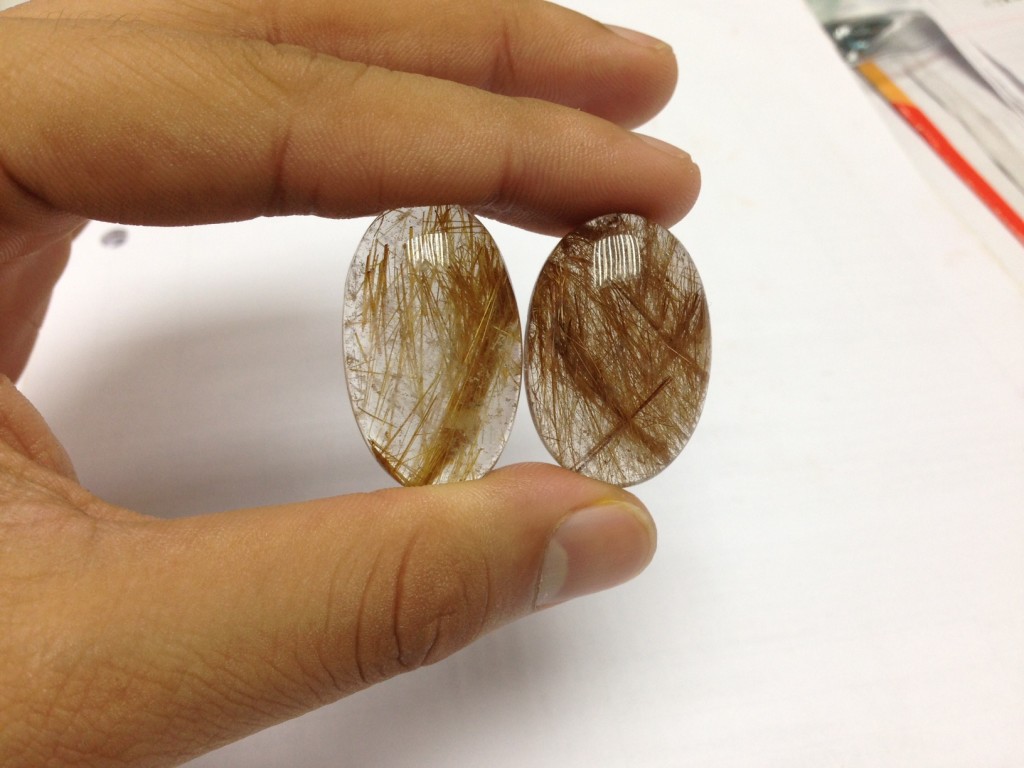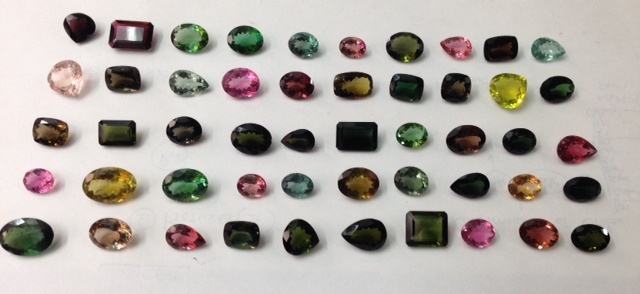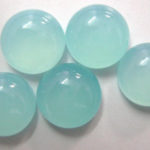Quartz with Inclusions
Many popular gems are quartz varieties containing various inclusions. These inclusions are actually minerals that formed along with the quartz, or else were present beforehand and became trapped inside the quartz crystals that grew around them. The list of observed inclusions in quartz includes dozens of mineral species, but only, a few of them characterizematerial of gem significance.
Rutilated quartz, sometimes called sagenite, contains inclusions of epidote, actinolite, or other mineralz, but rutile in long needle-like crystals is the most common. The finest such material comes from Brazil.
Tourmaline in quartz takes the form of black, rod-like crystals. Faceted gems are curiosities and highly decorative.
Dendritic quartz is so named because of the presence of tree-like inclusions. These are confined to thin layers within the quartz and produce interesting effects.The dendrites are actually deposits of minerals, such as manganese oxides, that precipitated along thin fractures within the quartz.
Aventurin is a rock made up of interlocked gains of quartz, containing small crystals of the mineral mica. In some varieties the mica is a green chrome-rich mineral called fuchsite, which colors the quartz a rich green. The mica flakes produces a sparkling sheen. Most of the green aventurine seen in jewelry comes from India.
Tiger’s-eye, or tigereye, is a popular and curious material. It consists of compact fibers of quartz that has replaced asbestos fibers. The light reflected from the fibers produces a storng sheen or silky appearance, like that of the original asbestos, known as chatoyancy. Sometimes variation in the color density of the material produces a “cat’s-eye” effect, but more often the appearance is that of shimmering bands of light. Tigereye may vary in color from brown and brownish-yellow to blue and blue-green. The latter hues are generally referred to as hawk’s-eye or falon’s- eye. Tigereye may be leached in hydrochloric acid and dyed various colors, including red, yellow, gray, blue, and green. These are attractive colors but do not occur naturally. Heating yellow-brown tigereye can sometimes oxidize the iron that causes the brown coloration, producing reddish tones.
Quartz sometimes displays a cat’s-eye effect caused by fibrous inclusions. Colors of such stones are generally grayish, black, gray-brown, greenish- yellow olive- green. The eye effect in quartz is sharper than in tigereye, but such gems are not as frequently seen in the gem trade.






